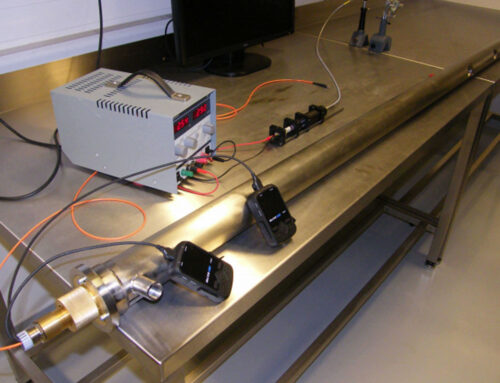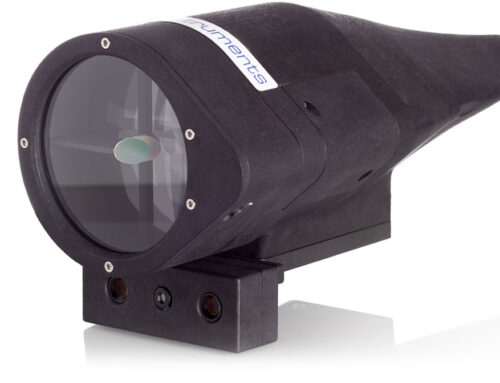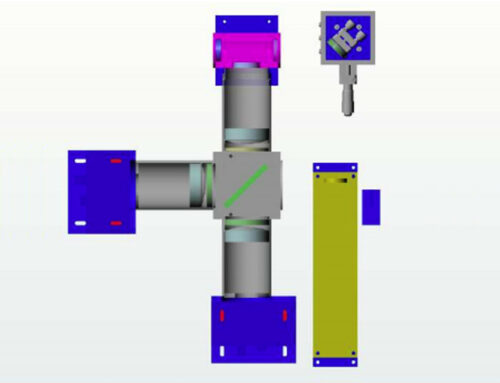Case Study Information
A stand-off Raman spectrometer has been developed to make observations of liquid samples within a gas pipeline. The instrument is based on a static Fourier Transform spectrometer. The high etendue offered by the instrument enabled four liquid samples to be measured from a distance of 2.4m within a gas pipeline. Liquids were identified with depths of less than 5 mm demonstrating the concept is viable for active pipeline measurement.
The problem:
Liquids in gas pipelines are recognised as a major issue. Natural gas processing to remove water vapour, carbon dioxide and hydrogen sulphide requires the injection of liquids into the gas stream. If these are not removed in a consistent and effective manner, they can cause significant damage to compressors and other plant in the gas transmission system. Rapid detection and identification of liquids at custody transfer points in the gas distribution network allows buyers and sellers of gas the tools necessary to take rapid operational decisions to minimise contamination of gas pipelines. Therefore, in situ measurement to identify the substance offers operators a rapid determination, and possible diagnosis, of the process problem without taking samples and waiting several hours, or sometimes days, for results. The identity of the liquid can be crucial as it may vaporise in the system or remain in a liquid phase, depending on the nature of the liquid, in which case direct user intervention may be required.
Until recently, no device has been able to make this measurement, given the operational limitations. One possible instrument solution to this problem was to use Raman spectroscopy as the technique is non-invasive, does not require a sample to be taken from the pipeline for laboratory analysis and has become cost-effective in recent years. However, the Raman effect is very weak, and thus conventional systems cannot provide sufficient signal to noise on the time scales required, given the environmental constraints. As part of the operating criteria, any instrument used to identify the nature of an unwanted liquid must not interfere with the gas stream and must be mountable on any pipeline. The instrument must also interface with existing infrastructure. Gas pipelines are often buried, and can only be accessed from a standoff pipe, which can be up to 2 m in height, therefore any device must be capable of making observations from at least this distance. This fact does have the advantage that the optical surfaces are remote from the liquid contamination flowing in the main pipeline, which should help lower maintenance requirements. Given the weak nature of the Raman response, it is imperative all the photons are collected from the target. This implies the spectrometer must have the highest etendue possible if the measurements are to be successful. Also, the instrument itself must be compact and robust if it is to be mounted on pipelines around the globe. Due to the multiplex disadvantage, the filtering requirements are critical to the instrument’s performance and had to provide a suppression of better than 10 to the 7 if the instrument was to be successful.
The solution:
To achieve this performance, a Raman instrument using a static Fourier Transform spectrometer, known as a spatial heterodyne spectrometer (SHS), was developed.

The instrument is assembled in a Michelson interferometer configuration with the mirrors replaced by reflective diffraction gratings. The two wavefronts from the grating pass through the beamsplitter and then interfere to form a fringe pattern in space that can be Fourier Transformed (FT) to extract the spectral information. The key advantage of this spectrometer design is for a given resolution it provides a greater than 100 times increase in the etendue than can be achieved with a traditional dispersive system and, unlike a traditional FT spectrometer, it has no moving parts.
The key advantage of this spectrometer design is that for a given resolution it provides a greater than 100 times increase in the etendue than can be achieved with a traditional dispersive system and, unlike a traditional FT spectrometer, it has no moving parts. The resolving power of the instrument is essentially the number of lines illuminated at the grating surface.
The SHS was originally developed for high-resolution measurements. The device has been used to make Raman observations. Due to the multiplex disadvantage, the filtering requirements are critical to the instrument performance and had to provide suppression of better than 10 to the 7 if the instrument was to be successful.
To the knowledge of the authors, this is the first time the full etendue advantage has been exploited to make stand-off Raman measurements in a non-laboratory setting.
Measurement requirements:
Within a gas pipeline, even small amounts of liquid can generate problems, therefore any instrument must identify potentially small amounts of liquid sample (with depths less than 5 mm) in a relatively short time span (≤less than or equal to 10 minutes), also the signal-to-noise ratio (SNR) must be greater than 5 for a clear positive detection. These pipelines are typically pressurised up to 90 Bar. The instrument is interfaced to the pipeline via bespoke designed pressurised sapphire
windows. For testing, a pressurised standoff pipe was constructed. This was mounted at the GL DNV testing sites at Loughborough and Spadeadam in the UK. Due to the high pressure in the pipeline, and industry standards the maximum window diameter that could be used was 70 mm (with a 68 mm working diameter). To minimise fluorescence issues while maintaining sufficient signal levels, the operational wavelength was selected as being 785 nm. A summary of the main instrument requirements is presented in Table 1.
| Parameter | Value |
|---|---|
| Integration time | <10 min |
| Distance to target | 2.3 m |
| Maximum aperture | 70 mm (diameter) |
| Minimum amount of liquid | 2 mm in depth |
| Resolution | 4 cm -1 |
| Spectral range | 400 – 2800 cm -1 |
Instrument design:
The harsh environmental conditions expected at a number of pipelines put challenges on the Raman instrument, particularly the laser. Therefore, the instrument was separated into a projection optics suite mounted on the standoff pipe, and an instrument unit that was coupled to the instrument via a pair of 100 m length multimode fibre optic cables (Fig. 2). The operational standoff distance was approximately 2.4 m and the requirement to measure 2 mm of liquid posed significant challenges for the instrument given the weak nature of the Raman response. The collecting aperture used was a 70 mm diameter, 200 mm focal length lens that was coupled directly to a ‘receive fibre’ with a core diameter of 0.9 mm and 0.22 NA. Given the restriction in the size of the entrance aperture and the instrumental requirements, a 500 mW output power laser was required operating at 785 nm. A laser line filter with a 4 nm bandwidth supplied by Semrock was used to ensure that no contaminant light was projected into the system. The laser light was coupled into the instrument via a 0.44 mm core diameter ‘transmit fibre’ with a 0.22 NA. The divergence of the projected light was 2 mrad, resulting in a 0.8 mm spot being observed at the ‘receive fibre’.
If a conventional Czerny Turner design had been used, to achieve the required resolution of 4 cm−1 would have required the instrument to have a slit of less than 50 µm. Therefore, using a fibre coupled Czerny instrument would have required the fibre to have a 50 µm diameter if no light was to be lost, which would have resulted in the instrument collecting a factor of approximately 150 times less light than the SHS solution. The traditional solution to this problem is to use a fibre bundle and stack smaller core fibres vertically at the slit. Given the spectrometer was coupled via 100 m of optical fibre, and no loss of light could be tolerated, using a fibre bundle was prohibitively expensive.
The large etendue advantage offered by an SHS enables a spectrometer based on this design to be directly coupled to a 0.9 mm fibre with no loss of light while achieving the required resolution.
| Parameter | Value | Notes |
|---|---|---|
| Source | Luxx Master Raman laser | |
| Operating wavelength | 785 nm | |
| Power | 500 mW | |
| Divergence | 3-4 mrad | |
| Receiver | 4200 mm FL Fused silica doublet lens | |
| Diameter | 68 mm | |
| Window | Sapphire window | 80 mm outside diameter |
| Fibre aperture | 0.9 mm | Receive fibre |
| Fibre NA | 0.22 | |
| Spectrometer | HES 2000 | |
| Diffraction grating | 2 × 150 g/mm 25 × 25 mm square |
10 mm aperture used |
| Detector | Princeton PIXIS 100 1340 × 100 pixels |
|
| Dark Noise | 20 µ m pitch
0.03 e/pix/sec |
|
| QE at 900 nm | 50% |
An image of the final mounted system is given below. The spectrometer and laser were mounted within a “measurement hut” located approximately 40 m from the pipeline. The Raman spectrometer was integrated with a larger sensor suite including a liquid depth sensor before being mounted on the pipeline.
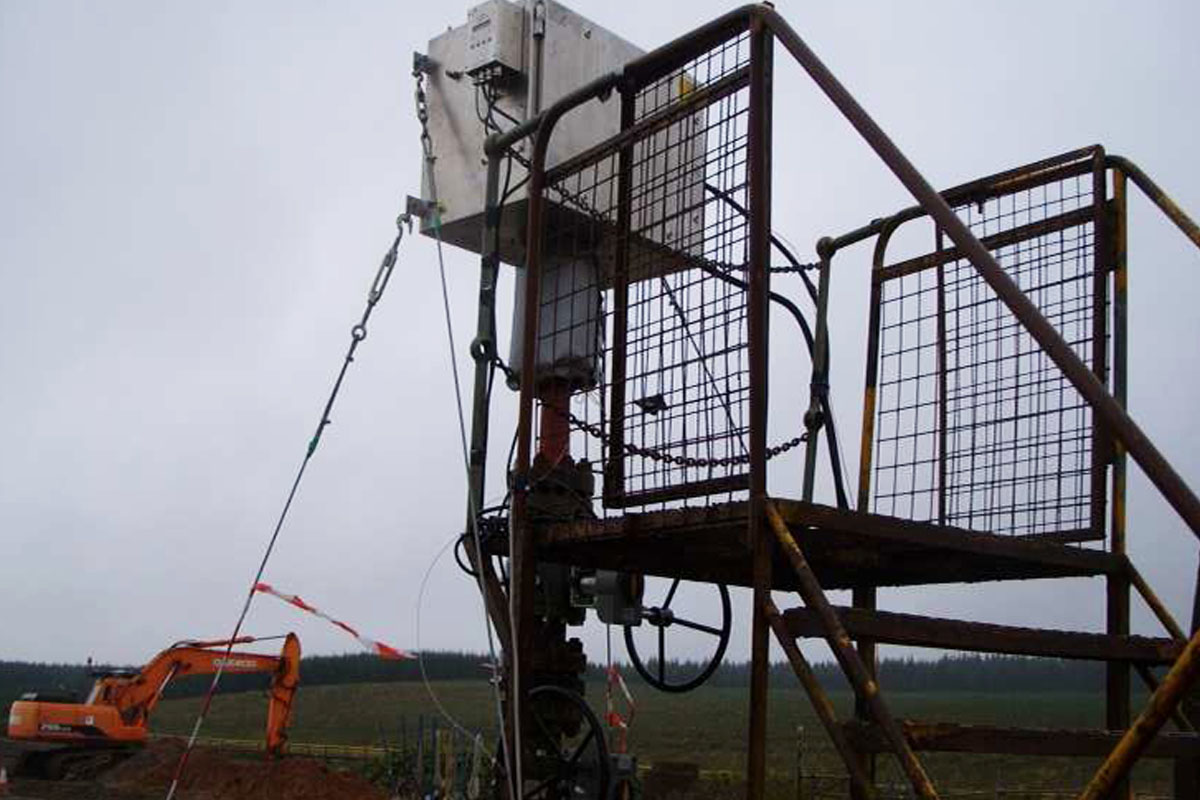
The instrument was tested against five different liquids: xylene, methanol, tri-ethylene glycol (TEG), mono-ethylene glycol (MEG), and a sample of compressor oil.
Experimental results:
The instrument was tested against all five target liquid samples Measurements were made at liquid depths from 2 mm up to 20 mm. Below are the returned power spectra acquired from each liquid in the pipe. Good SNR was returned for the data from all of the liquids tested.
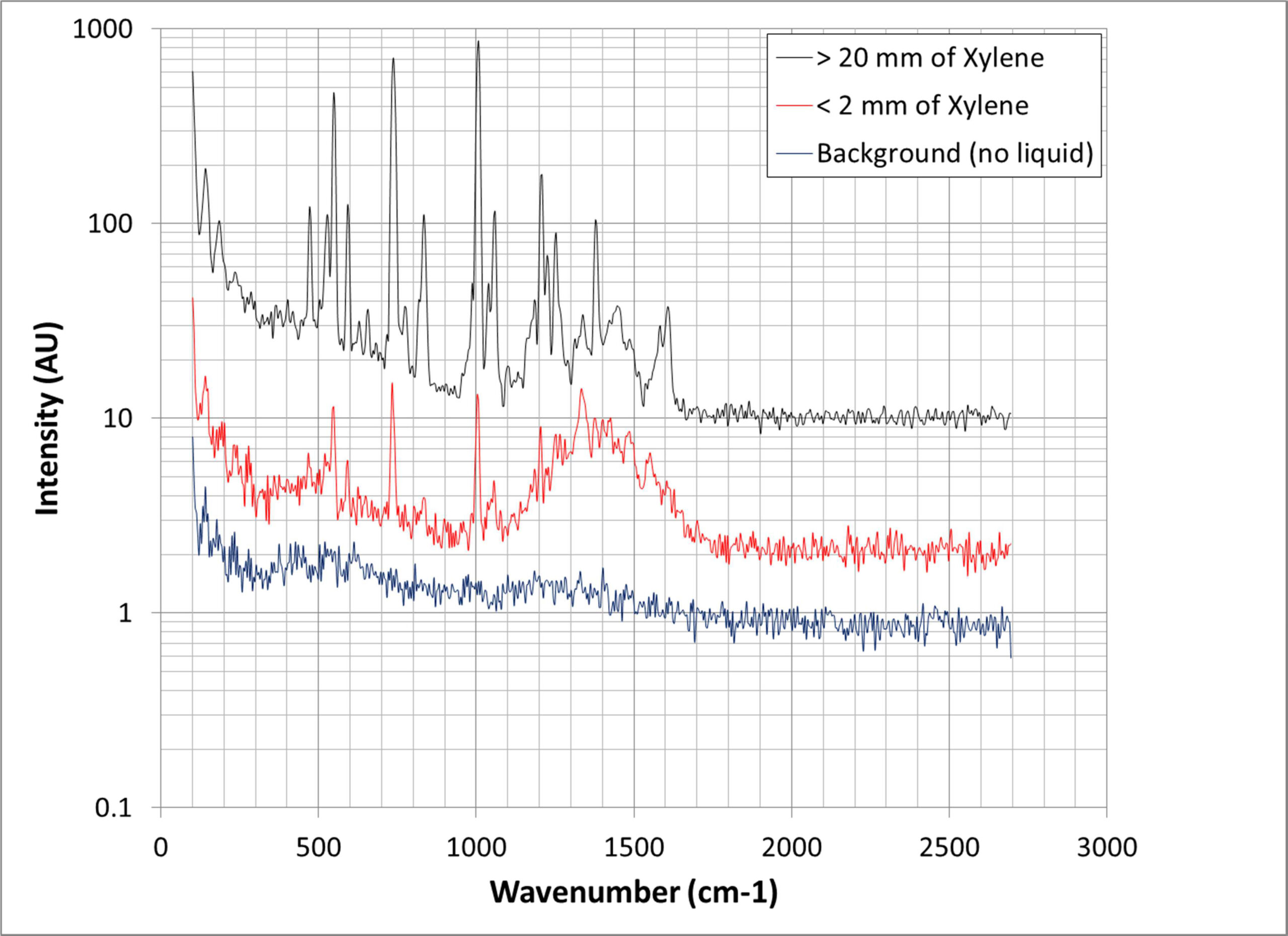
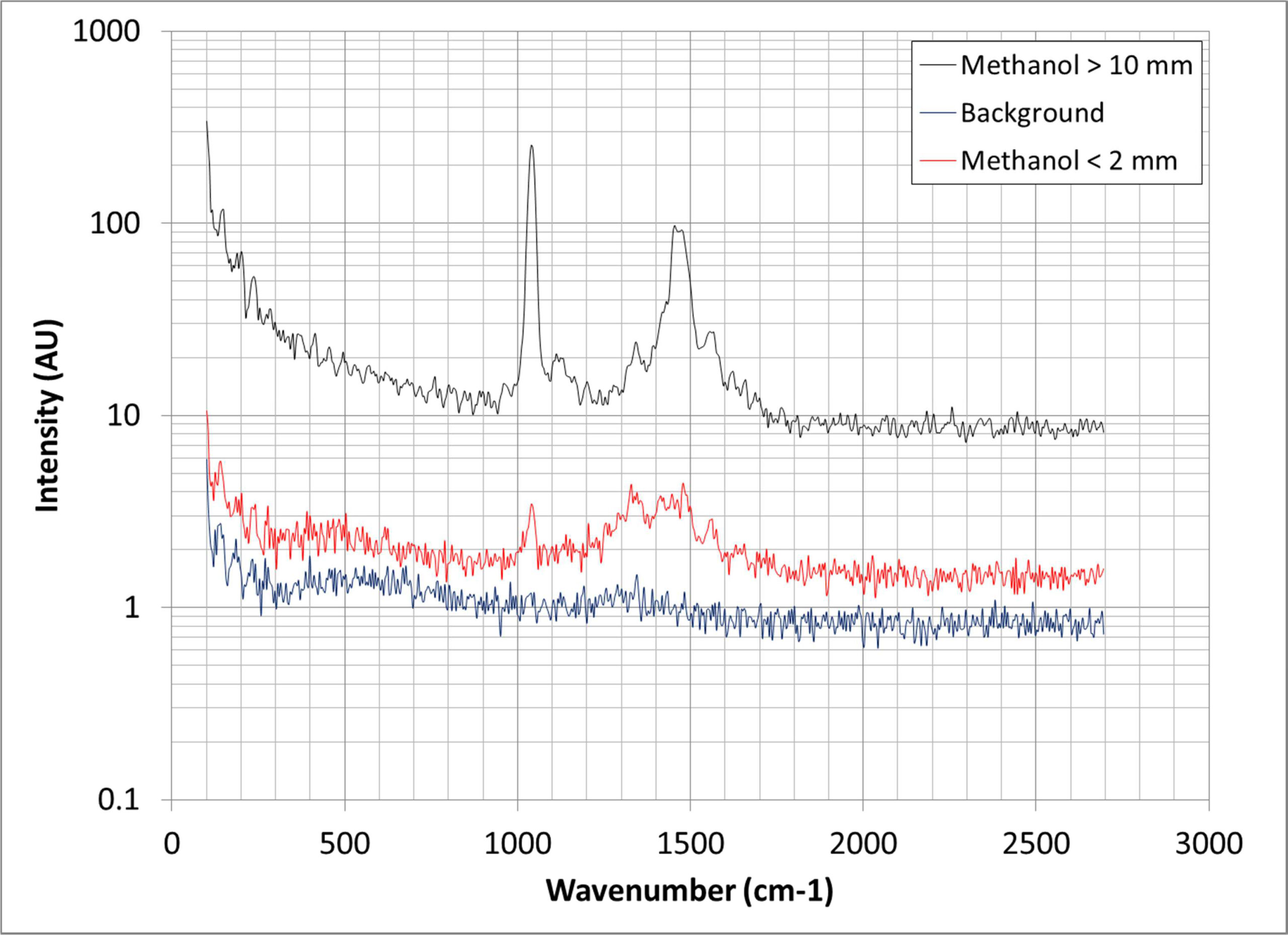
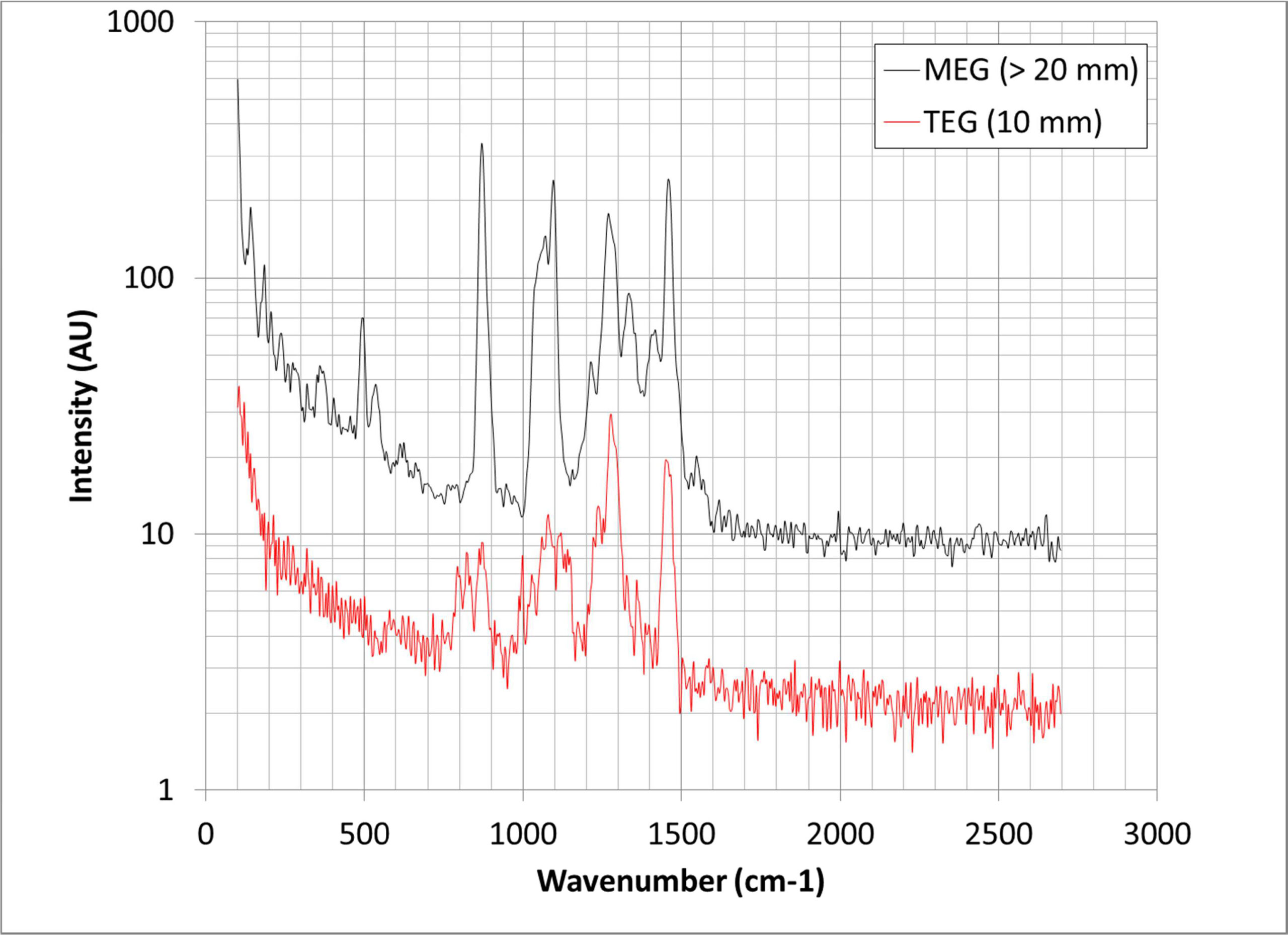
A new class of Raman instrument, based on a spatial heterodyne spectrometer, has been demonstrated. The instrument has shown the ability to identify liquid samples in a gas pipeline with samples of xylene, MEG, TEG, methanol and compressor oil being measured. The measurements have been made from a standoff distance of 2.4 m with liquid sample depths varying from 2 to 20 mm, and within the required integration time for the observations of less than 10 minutes. The superior etendue given by the instrument allows all the light to be gathered and collected within a 0.9 mm aperture fibre. This system can offer gas processing operators rapid detection and identification of liquid contamination events and could be used for in-line analysis of mixed-phase and liquid phase pipelines to determine both trace and percentage level constituents of the liquid flows. The system is now ready for full integration onto an active pipeline for extended trials examining factors such as usability and reliability.
Access the full paper here.


